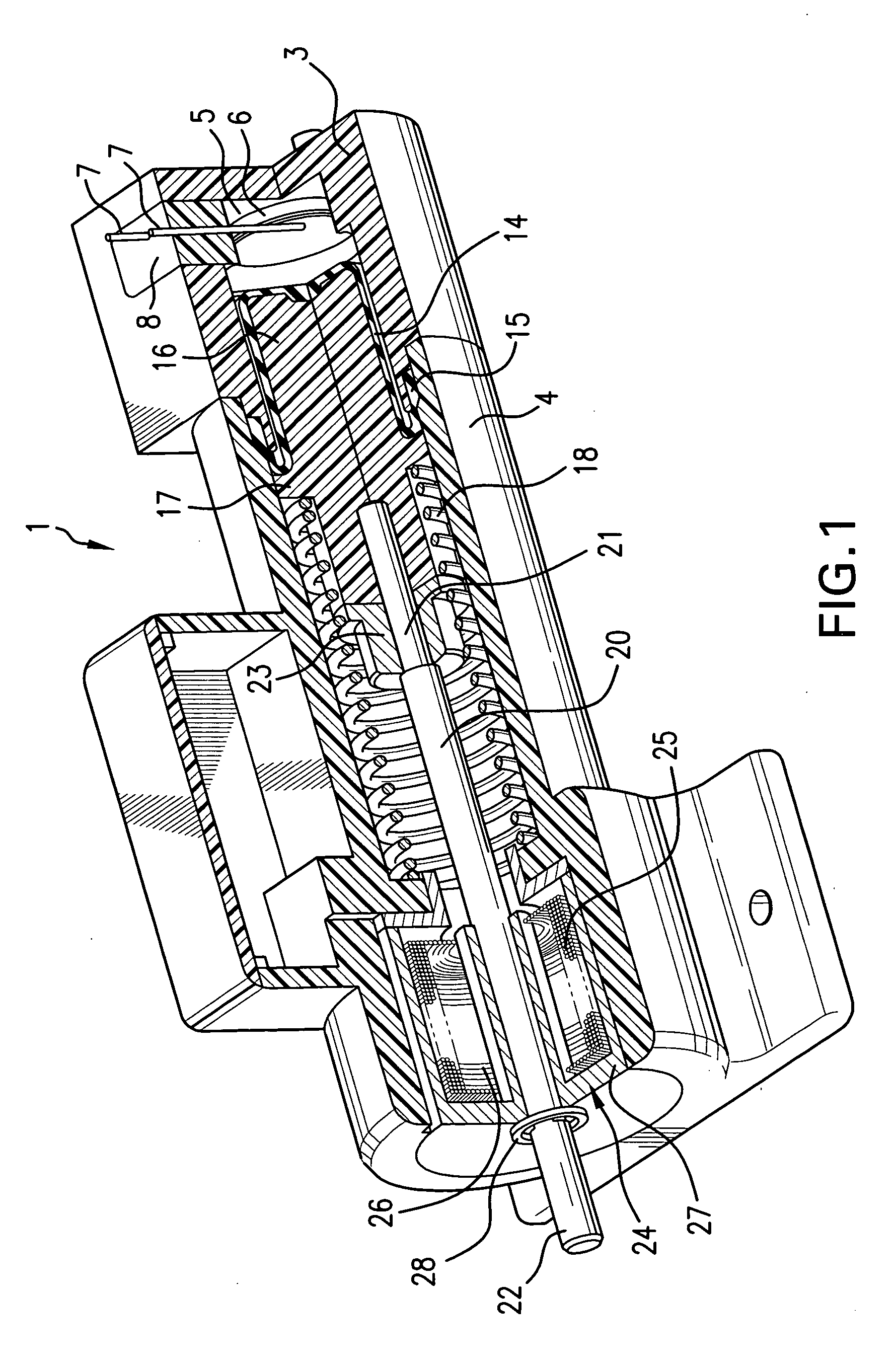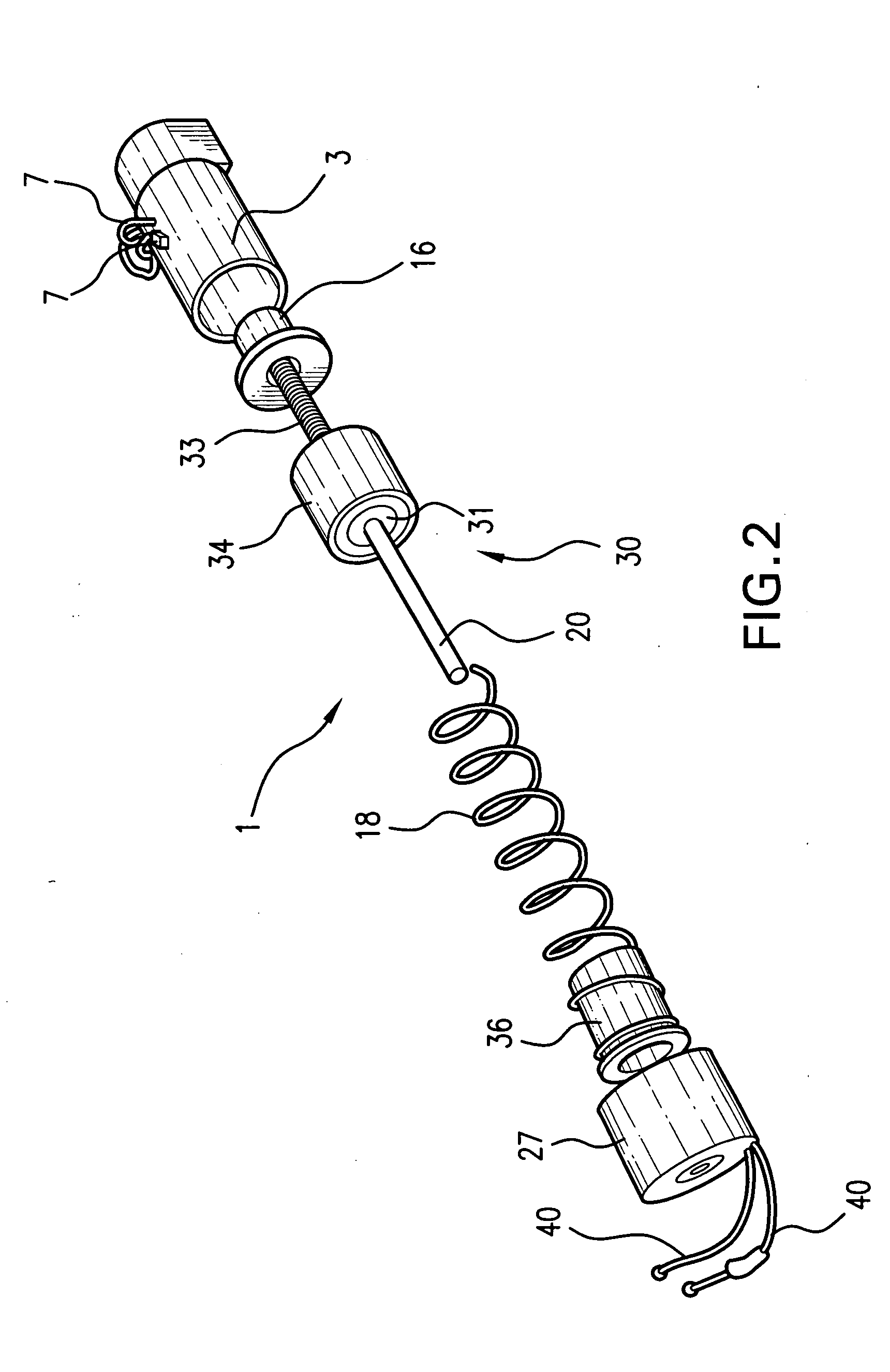Thermo-magnetic actuator
a technology of magnetizing actuators and actuators, which is applied in the direction of magnets, machines/engines, magnets, etc., can solve the problems of unsatisfactory electrical power consumption to keep the piston rod extended, and the amount of electrical power supplied
- Summary
- Abstract
- Description
- Claims
- Application Information
AI Technical Summary
Benefits of technology
Problems solved by technology
Method used
Image
Examples
Embodiment Construction
[0017]FIG. 1 shows, in a partially sectioned pictorial view, a first embodiment of a thermo-magnetic actuator 1 according to the invention. The thermo-magnetic actuator 1 includes a housing having a rear or proximal housing part 3, and a distal housing part 4 that are joined together. The housing parts, as illustrated in FIG. 1, are preferably plastic parts that are bonded together, but could be metal. The plastic parts are a material able to withstand the temperature of the working fluid and other elevated temperatures produced by the heater that is described below. The proximal housing part 3 includes a chamber 5 that contains a working fluid, frequently a fluorocarbon. The chamber also houses an electrical heater 6, shown in the form of a disk, with electrical leads 7 that pass through the wall of the distal part of the housing so that an electrical current can be supplied to the heater 6. If the housing is electrically conducting, an electrically insulating material 8 fills an o...
PUM
 Login to View More
Login to View More Abstract
Description
Claims
Application Information
 Login to View More
Login to View More - R&D
- Intellectual Property
- Life Sciences
- Materials
- Tech Scout
- Unparalleled Data Quality
- Higher Quality Content
- 60% Fewer Hallucinations
Browse by: Latest US Patents, China's latest patents, Technical Efficacy Thesaurus, Application Domain, Technology Topic, Popular Technical Reports.
© 2025 PatSnap. All rights reserved.Legal|Privacy policy|Modern Slavery Act Transparency Statement|Sitemap|About US| Contact US: help@patsnap.com



